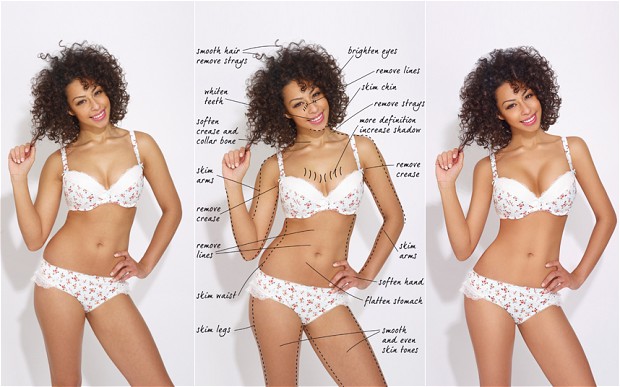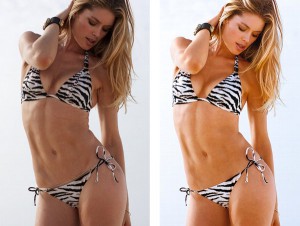Opinion: Calling Time on the Airbrush
Wherever you look, an image is selling some brand or product, and whether we notice it or not every single image will have been tested through the editing process. From McDonald’s burgers to Victoria’s Secret lingerie, every product photo has been scrutinised at close pixel range to create an ideal that we humans find appealing and desirable. Whether it’s oozing tomato ketchup or sun kissed skin, it’s all an ideal that people – or the media – have decided are visually appealing and those selling it to us know it. But when does digital enhancement become misrepresentation? Do we know where the acceptable line is drawn and when it has been crossed? Are we mis-sold when image manipulation gives us feelings of confusion, anger and upset, or are we just taking it all to heart?
Airbrushing, or ‘Photoshopping’, is a procedure that most professionals in the industry are familiar with and implement all the time. The most talented of photographers will have their images examined and retouched to ensure the aesthetics marry the feel and attitude of the image. Detail is fine tuned, colours enhanced, distracting areas removed. Capturing an image so specifically is crucially important to convey the right message in an advert or editorial. If the consumer doesn’t relate to an image then the product isn’t sold. If we don’t believe it or are threatened by it, it can mean poor publicity. If we don’t accept it, the challenge is to change.
Image editing has it’s place. A manufacturer and retailer wants an image that shows off their product in the best light, and to do this digital tidying up is necessary. A loose thread or fabric that has hadn’t laid flat are mistakes that validate correcting. Maybe the lighting reflected oddly on a certain area of the garment or the intricate detail along a hem wasn’t picked up sufficiently on camera. Even a model’s flyaway hair or a crease on the skin from a previous pose or item of clothing, it all needs concealing so the most prominent article isn’t detracted by irrelevant discrepancies. This kind of airbrushing is acceptable because it’s use is not to mislead or deceive, and because of it’s subtlety, whether the image had been ‘shopped’ wouldn’t even be a thought.
It’s the images we see that make us stop and think that there’s something odd, when airbrushing takes it’s unscrupulous turn. The product isn’t what’s essentially caught our eye, it’s the abnormally shaped torso and lack of normal bodily function that makes the model seem non human and in some cases, robotic. When the airbrush changes the contour of a real model’s figure, diminishes all natural movement in skin by deleting folds and lines, and when we start to be more aware, more conscious of what our younger generation think and how our toddlers want to look like teens, that’s what makes this so real. Airbrushing that recreates a model’s figure, effectively building another model entity, is incredibly dangerous both to ourselves and our children because it means we are no longer being sold a product but being moulded into another’s ideal, what we think is our ideal is warped by the altered images we flick through on a daily basis. The dress we long for has become the tan and slender body we want too. Advertising should never have crossed this line, from the point when we needed to question what we were seeing and whether we think it’s real and right or not. Because if we’re fed and told what we want, we no longer know who’s doing the thinking for us; we or them?
We’re all attracted by that juicy burger, oozing it’s tomato ketchup and voluptuous melting cheese and as much as we crave and desire it we know it is what it is, a burger, only made to look tastier. What we need to make sure doesn’t happen is for that tasty burger to transpire into a totally new, amazing burger with perfect edges and promises of an out of body eating experience, that alters how we think and starts making us think negatively about ourselves, but just ends up being the same old burger. Clever, thought controlling advertising lurks around every corner.
Body confidence affects everyone and with commercial advertising heading in its current direction we do have an obligation to consider calling time on the airbrush. If the over editing of images doesn’t change, and editors don’t rein in that correction pen, something’s going to snap, and it won’t be the model’s digitally deformed torso.
Becky x





Leave a Reply